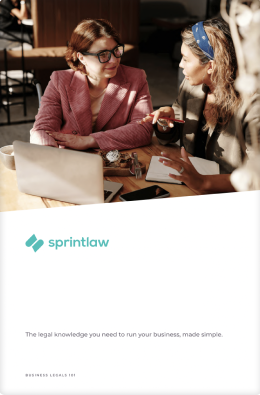Contents
In April 2020, the Fair Work Commission rejected the appeal brought by Ms Amita Gupta, a former Uber Eats deliverer, finding that Ms Gupta was not an employee of Uber Eats.
This case brought to light a broad spectrum of issues relating to the role and status of deliverers in the food marketplace, the employee/contractor distinction, and the surprisingly difficult question of what exactly Uber Eats is — a food delivery app? A payment agent? A technology platform that provides lead generation services to delivery drivers?
The Commission’s rulings on these points have significant implications for food delivery platforms, delivery drivers, restaurants and the future of the so-called “gig economy” in Australia — for better or worse.
A Brief Look At The Case
Ms Gupta was permanently blocked from accessing Uber Eats’ Partner App, the app used by Uber Eats deliverers to take on work, for failing to meet Uber Eats’ standards for timely delivery. Ms Gupta argued that she had been “unfairly dismissed” — a claim reserved exclusively for employees of a company.
When Ms Gupta first brought this case before the Fair Work Commission, the Commissioner primary considered:
- the facts which indicated that Ms Gupta was treated & behaved as either an employee or contractor; and
- the contract which Uber Eats deliverers, including Ms Gupta, are required to sign up to before they take on delivery jobs (also called “Terms of Service”).
At this first hearing, the Commission decided that, on the facts, the relationship tended to demonstrate one more akin to an independent contractor. And, because the parties agreed that Ms Gupta was not an employee in the Terms of Service, that tipped the balance further into the independent contractor camp, which was ultimately the Commission’s ruling.
Ms Gupta subsequently appealed that ruling, and claimed that the Commissioner made an error in deciding that she was not an employee of Uber Eats. We’ll now consider how the Fair Work Commission reached its final judgment.
Who Are Uber Eats Delivery Drivers Working For?
In determining whether Ms Gupta was an employee of Uber Eats, the Commission first considered who was engaging who.
Is Uber Eats engaging deliverers to perform delivery services (which could indicate an employee or contractor relationship)? Or are deliverers simply using Uber Eats as a technology platform in the course of the deliverer’s business of delivering foods (which indicates neither an employee or contractor relationship), much like they might also use Google Maps?
On the surface this may seem like an obvious question. But when we look further into the relationship between the various parties involved, it becomes less clear.
In the Uber Eats ecosystem, we have four parties: Uber Eats, the deliverer, the restaurant that prepares the food for the customer, and the customer who orders their food.
Ms Gupta’s Argument
As we know, Ms Gupta argued that she was an employee of Uber Eats, and that she had no direct relationship with the customers or restaurants. The diagram below illustrates this argument.

Uber Eats’ Argument
Uber Eats argued that Ms Gupta was neither an employee nor a contractor. With reliance on Uber Eats’ Terms of Service signed by Ms Gupta, Uber Eats argued that it operates merely as a payment agent and lead generator between the deliverer, customers and restaurants.

The Contract
Uber Eats’ Terms of Service are strategically drafted to characterise the type of relationship between the deliverer, Uber Eats, the customer and the restaurant.
This is a common strategy used by platform businesses in the gig economy, going to the core of their business model of enabling flexibility, while avoiding the costs and burdens of complying with workplace laws.
For example, Uber Eats’ Terms of Service contained the following elements:
- Relationship: The deliverer has a direct business relationship with the restaurants & customers.
- Not an employee: The deliverer is not an employee, independent contractor or worker of Uber Eats under Australian law.
- Platform role: Uber Eats acts as a payment agent and lead generator between the deliverer, customers and restaurants.
- Delivery fee: The deliverer can charge a “delivery fee” for its services. However, the delivery fee charged must be calculated according to Uber Eats’ methodology (or a lesser amount).
- Service fee; The deliverer agrees to pay a “service fee” to Uber Eats in exchange for Uber Eats providing its services to the deliverer.
The Commission’s Findings
Before deciding if Ms Gupta was an employee or contractor, the Commission first considered Uber Eats’ argument that it was Ms Gupta who in fact engaged Uber Eats as a lead generator, and not the other way around. The Commission disagreed with Uber Eats on this point, and confirmed that it was Uber Eats who engaged Ms Gupta, be it either as a relationship of employment or as an independent contractor.
Their ruling was based on the following reasoning:
- There was no contractual relationship between Ms Gupta and the restaurants she attended to pick up and deliver meals, and her opportunity to negotiate lower fees with the restaurants as permitted in the Terms of Service was “commercially nonsensical” and didn’t fit with the way Uber Eats operates.
- The Terms of Service between Ms Gupta and Uber Eats require deliverers to provide their services with due skill, care and diligence, and maintain high standards of professionalism. As these obligations are owed to Uber Eats under the Terms of Service, it can be extrapolated that Ms Gupta works for Uber Eats (not the restaurants).
- Payment for Ms Gupta’s delivery services was completely within the control and responsibility of Uber Eats — including collection & processing, the amount of the delivery fee & any adjustments, and the preparation of invoices.
The Minority View
Interestingly, the minority of the Commission found that, while Ms Gupta was not an employee of Uber Eats, she also was not an independent contractor.
The minority essentially agreed with Uber Eats that the company “acts as a commercial intermediary between restaurants, customers and deliverers, from which it earns fees”. This means that Ms Gupta was essentially working for herself, using the Uber Eats app as a platform to facilitate this work, and ultimately wasn’t working for Uber Eats at all.
This didn’t affect the final ruling, as both the majority and minority concluded that there was no employment relationship, but it’s interesting to note.
Factors Indicating An Employment vs Contractor Relationship
Whether or not a relationship is one of employment or of an independent contractor is not clear cut. There are several factors that must be considered which cumulatively indicate if the relationship is, in substance, more one of an employee or contractor.
The Commission considered the following factors as indicating that Ms Gupta was an independent contract, an employee or “neutral” (being a factor which contributed to neither argument).
Independent Contractor Factors
- Work hours: Uber Eats had no control over Ms Gupta’s hours. Ms Gupta was free to work when, and for how long, she chose. Ms Gupta was not obliged to accept any particular delivery job.
- No exclusivity: Ms Gupta was not obliged to work with Uber Eats exclusively, and could accept work through other food delivery competitors.
- Public presentation: Ms Gupta did not need to present herself as a representative of Uber Eats. Uber Eats did not require her to wear a uniform, display the Uber Eats logo, or represent to the public generally that she was part of the Uber Eats business.
Employee Factors
- Limited level of skill: Ms Gupta’s role as an Uber Eats driver wasn’t skilled, and did not require any special qualifications.
- Delivery Fee: The delivery fee was set by Uber Eats and payment was made on a weekly basis.
- No independent business: There was no aspect of Ms Gupta’s work that indicated she was running her own business; she was not expanding her customer base or establishing goodwill with customers.
Neutral Factors
- Equipment: In the course of performing her services, Ms Gupta was required to provide her own car and phone. However, this equipment was not purchased for the purpose of being an Uber Eats deliverer; it was likely purchased for personal use and used incidentally during her work.
- Control over quality: While Uber Eats exercised a fair level of control over Ms Gupta regarding the standard and performance of work, this degree of control is not unusual in either a contractor or employment relationship.
- Remuneration: Ms Gupta was paid per delivery, was not paid super, and managed her own tax affairs. As the Commission looks to the form not the substance of any arrangement, this didn’t weigh in particularly heavily toward either an employee or a contractor arrangement.
With regard to the factors set out above that support the “independent contractor” camp, the Commissioner ultimately decided that, on balance, the relationship between Ms Gupta and Uber Eats was not an employment relationship, as it lacked the essential hallmarks of employment relationships.
Looking Forward
What does this judgment mean for deliverers and marketplaces more generally?
Ms Gupta’s case sets a precedent for similar business models to Uber Eats in limiting their obligations to deliverers and avoiding the often onerous responsibilities that come with being an “employee” (including entitlements to sick leave, superannuation, and of course, navigating unfair dismissal claims). This ruling sets a less burdensome landscape for marketplaces to come, but may prove down the track to be against public interest.
As a marketplace, knowing the key distinguishing features between an employee and contractor is essential to ensure you’re meeting your obligations under Australian law. Further, thoughtfully drafted terms of service (also known as marketplace terms and conditions) between the marketplace and users are essential. While Ms Gupta’s case shows that the Fair Work Commission or a Court look to the facts over the label placed on a commercial relationship, having Terms of Service that reflect the intended relationship goes a long way.
Need Help?
If you’re operating a business and are not sure if your workers or users may be employees or contractors, or need help with your user Terms & Conditions, we’re here to help!
Our team includes experienced employment and marketplace lawyers, and we can advise you on your next steps. You can reach out to us at 1800 730 617 or team@sprintlaw.com.au.
Get in touch now!
We'll get back to you within 1 business day.












